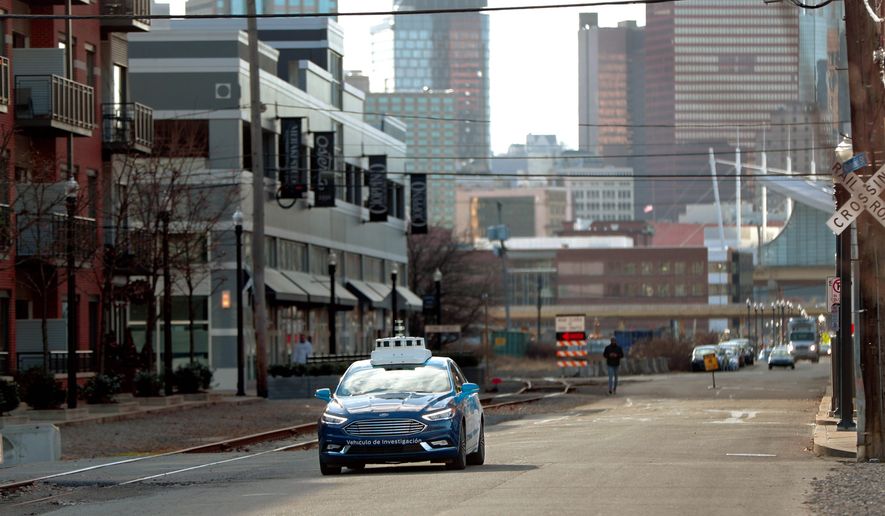Ohio has opened the country’s largest test track for driverless vehicles, complete with Teslas swerving through intersections, headfirst collisions and cheering engineers.
On July 1, Florida began allowing autonomous vehicle tests without backup drivers, a move widely seen as an effort to make the state a leader in self-driving cars.
In Phoenix, the nation’s first commercial self-driving taxi service ferries passengers everywhere. Some vehicles have safety drivers; others have no drivers at all.
“We are a city and a state that has embraced the technology. We have been very laissez-faire. We have no desire to create a lot of regulations,” said Mayor Kevin Hartke of Chandler, Arizona, where Google offshoot Waymo has a fleet of more than 600 self-driving taxis.
Despite fatal accidents and technical glitches, the testing of self-driving technology is accelerating. States are increasingly jockeying to court the growing industry, which promises to revolutionize how people move from point A to point B.
Industry analysts say these interstate rivalries are being fueled by a lack of Washington regulation. The Federal Automated Vehicles Policy includes no rules, but only guidance for states.
Some worry that the varied rules from state to state could hinder car manufacturers, but others, including Florida Gov. Ron DeSantis, welcome the patchwork approach.
“Florida officially has an open-door policy to autonomous vehicle companies, and I encourage them to relocate from California to Florida,” the Republican said before signing the state’s bill into law last month.
Since Nevada became the first to adopt regulations in 2011, at least 41 states and the District of Columbia have considered legislation of all stripes related to autonomous vehicles, according to the National Conference of State Legislatures.
The laws range widely and include allowing vehicles to operate on public streets without any human drivers. Michigan, Texas and now Florida also allow people-free vehicles. Rules for testing also vary.
The stakes are massive. North America is the world’s largest autonomous vehicles market, accounting for almost 40% of total sales.
Market forecasts for North America show that an industry that was worth $1.42 billion three years ago will reach $24 billion by 2027.
As a result, analysts say, states are smart to keep loose regulations that will help the industry confront the massive research, design and testing costs required to get vehicles operational.
In Arizona, Waymo’s driverless fleet was unveiled only after 10 million miles of testing on public roads, more than $1 billion in investment and over a decade of development.
In Florida, Mr. DeSantis and state lawmakers took an industry-friendly approach. They said they were moving to show manufacturers that the state is legally prepared even before the cars are.
“As soon as companies are ready to roll them out, they’ll be able to get onto our roadways,” said state Rep. Jason Fischer, a Republican sponsor of Florida’s legislation. “This will allow ultimate flexibility for companies.”
Research and design costs are so high, though, that the normally fierce rivals of the automotive industry are joining forces and pooling resources, analysts say.
Late last week, Volkswagen announced plans to invest $2.6 billion in Ford’s self-driving unit.
“There’s only going to be a few winners who create the platforms for the future,” said Ford CEO Jim Hackett. “We cannot be late.”
In February, German firms Daimler and BMW unveiled a joint driverless vehicle and ride-sharing venture. Honda has invested $2.75 billion in General Motors’ driverless unit, Cruise, to launch a fleet of unmanned taxis.
Meanwhile, Tesla, Toyota and Volvo have formed partnerships to pool their self-driving efforts, some with other car manufacturers and others with tech firms such as Panasonic for battery research.
Industry analysts say car manufacturers, in addition to feeling pressure from a sales slump around the world, are also in a research and development battle with leading Silicon Valley firms such as Google and Uber, both of which have enormous financial resources and appear to be ahead in the race to bring driverless products to market.
States are also jumping directly into testing to attract industry.
In Logan County, Ohio, about 40 miles northwest of Columbus, the new Smart Mobility Advanced Research Test Center was buzzing with activity last week as engineers tested and avoided many of the types of crashes that scare the public.
The $45 million center covers 540 acres, two-thirds the size of Central Park, and has a six-lane intersection.
“This is the hook that brings [driverless technology companies] here and gets them interested in seeing what we’re doing,” said Kristi Tanner, senior managing director for JobsOhio, the state’s economic development nonprofit, which helped fund the center.
• Dan Boylan can be reached at dboylan@washingtontimes.com.




Please read our comment policy before commenting.